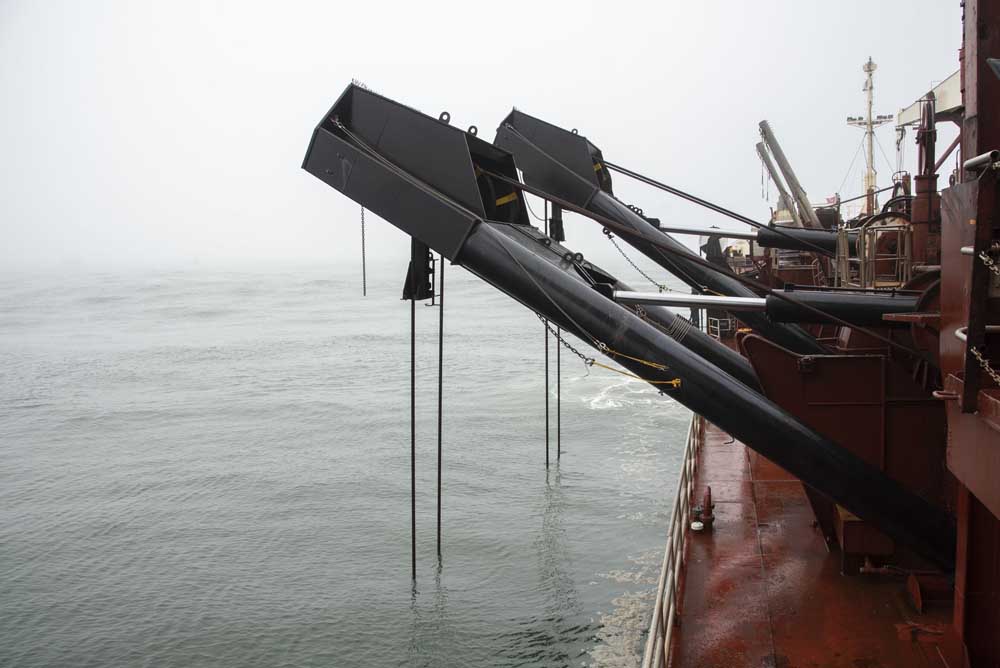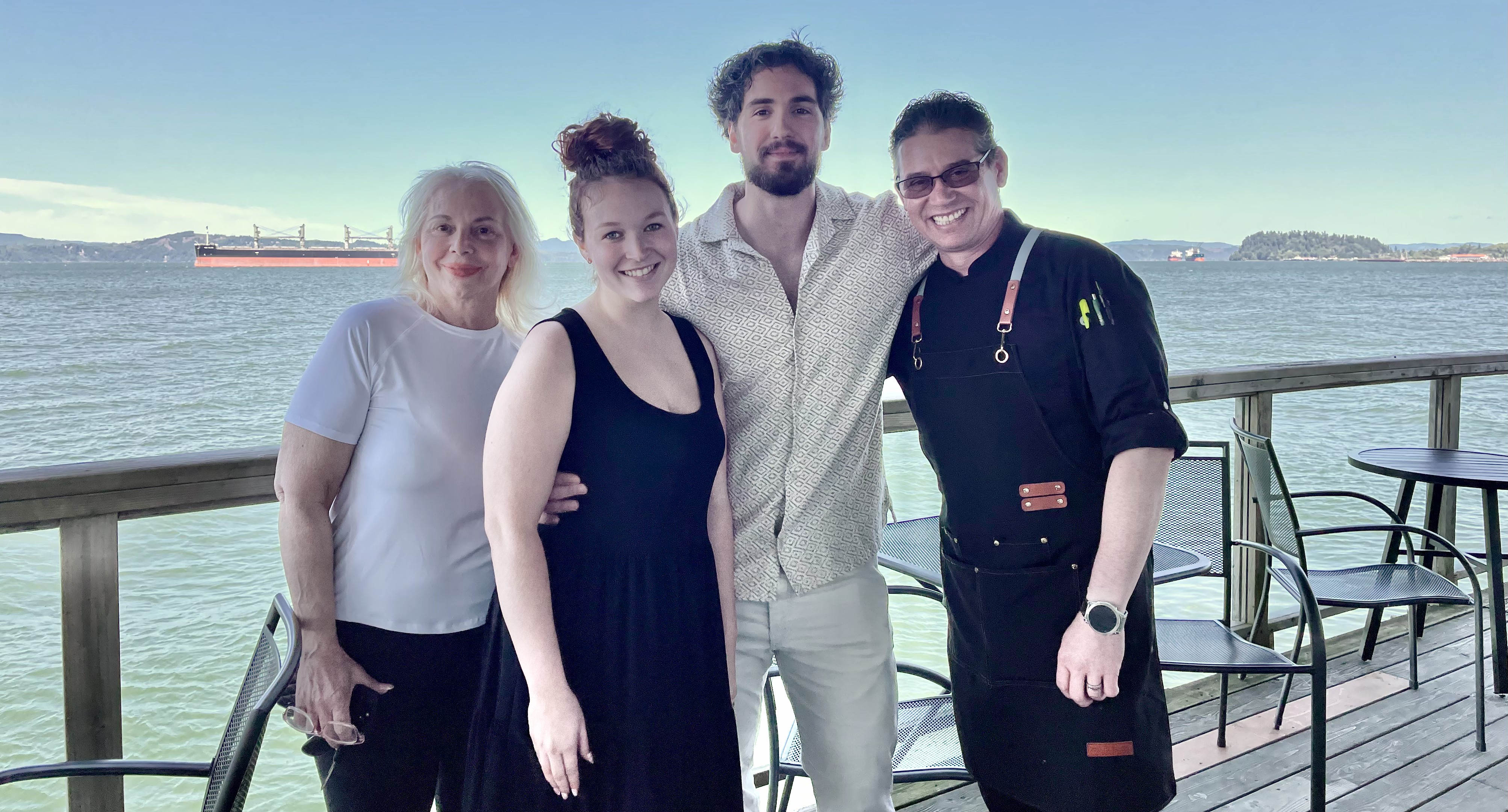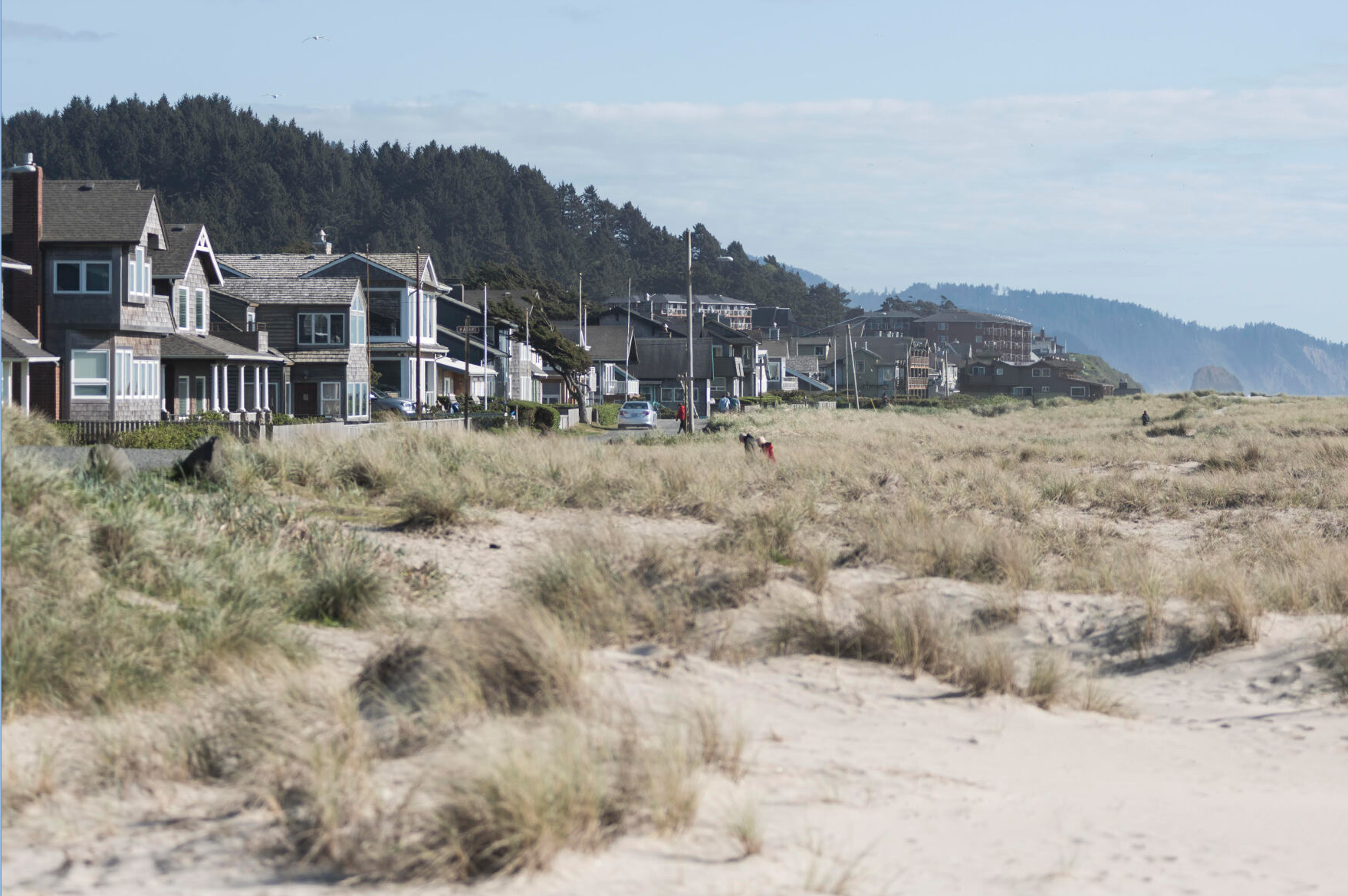From the editor’s desk
Published 8:00 am Saturday, October 7, 2023

- Dragarms on the side of the Essayons dredge vessel lower pumps into the water.
Thank you for your interest in reading The Astorian. Here are a few stories that you might have missed this week:
Trending
•••
The Essayons, a dredge vessel operated by the U.S. Army Corps of Engineers, has a crucial mission: keeping navigation channels passable for commerce and tourism.
One of those channels is on the Columbia River. The federal government mandates that the channel be kept at a depth of 43 feet to make navigation possible and minimize the danger caused by shifting sands.
Trending
Despite its large size, the Essayons still sometimes tilts to the side when dredging, making for an occasionally turbulent ride, especially near the Columbia River Bar. And although the vessel stops working by the end of October in anticipation of winter storms, weather concerns still factor into the crew’s decision-making processes.
“No such thing as going to sea in anything and not worrying about the weather,” said James Holcroft, the ship’s captain. “Always have to worry about it.”
See the story by Rebecca Norden-Bright by clicking here.
•••
Astoria has adopted a waterfront master plan that will guide development from Pier 1 to the Astoria Bridge in Uniontown.
The plan, crafted by the Portland-based landscape architecture firm Walker Macy, outlines a new hotel to replace the Astoria Riverwalk Inn, space for private marine industrial uses on Pier 1 and concepts for a market hall, fishing village and boardwalk around the West Mooring Basin.
The plan was a collaboration between the city and the Port of Astoria.
Read the story by Nicole Bales by clicking here.
•••
Seaside has purchased an ambulance to help improve response times.
The ambulance would be dispatched if Medix Ambulance Service is delayed longer than 10 minutes. The Astorian reported in April that Medix, a private ambulance company, had routinely failed to meet response time requirements for emergency medical calls for more than a year.
Medix has cited a nationwide paramedic shortage and issues brought on by the coronavirus pandemic as factors.
“It could be that we’re sitting on a call with a critical patient, and we’re waiting on an ambulance for a while due to other calls that might be stacking up, distance, shortage of staff for that day … all these things happen,” David Rankin, a Seaside fire division chief, said. “We understand that it’s a better outcome for patients to get to the hospital quicker, as well as freeing up our crews for the next call. That means if we have a fire or another medical call, or a water rescue or something, that we’re not just stuck in place, essentially unable to respond.”
Take a look at the report by Jasmine Lewin by clicking here.
•••
We invite you to help sustain local journalism on the North Coast. Please consider subscribing. We have several options available at: www.dailyastorian.com/subscribe-now/
— Derrick DePledge









